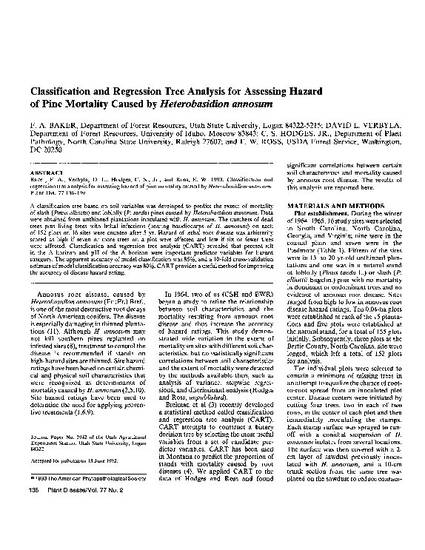
Article
Classification and Regression Tree Analysis for Assessing Hazard of Pine Mortality Caused by Heterobasidion annosum
Plant Disease
(1993)
Abstract
A classification tree based on soil variables was developed to predict the extent of mortality of slash (Pinus elliottii) and loblolly (P. taeda) pines caused by Heterobasidion annosum. Data were obtained from unthinned plantations inoculated with H. annosum. The numbers of dead trees plus living trees with lethal infections (bearing basidiocarps of H. annosum) on each of 152 plots on 16 sites were counted after 5 yr. Hazard of lethal root disease was arbitrarily scored as high if seven or more trees on a plot were affected and low if six or fewer trees were affected. Classification and regression tree analysis (CART) revealed that percent silt in the A horizon and pH of the A horizon were important predictor variables for hazard category. The apparent accuracy of model classification was 85%, and a 10-fold cross-validation estimate of model classification accuracy was 80%. CART provides a useful method for improving the accuracy of disease hazard rating.
Disciplines
Publication Date
1993
DOI
DOI: 10.1094/PD-77-0136.
Citation Information
Fred A. Baker. "Classification and Regression Tree Analysis for Assessing Hazard of Pine Mortality Caused by Heterobasidion annosum" Plant Disease Vol. 77 Iss. 2 (1993) p. 136 - 139 Available at: http://works.bepress.com/fred_baker/30/
